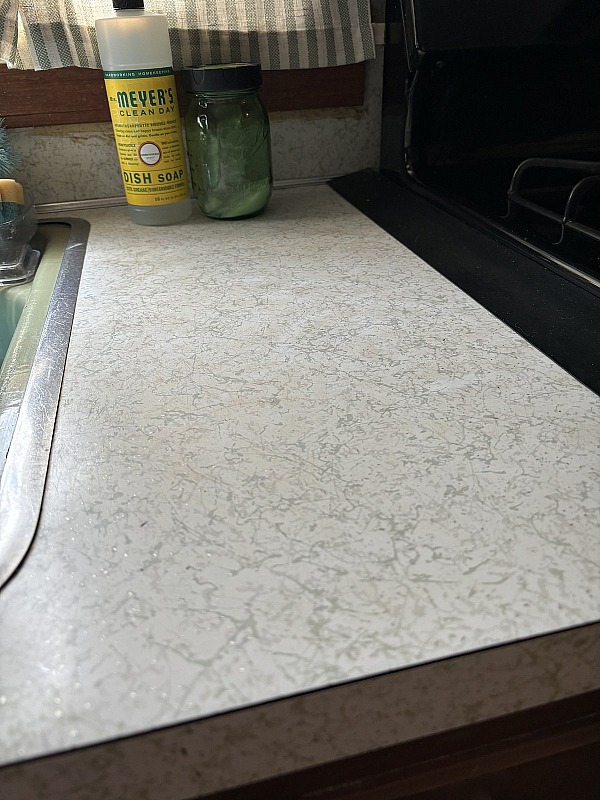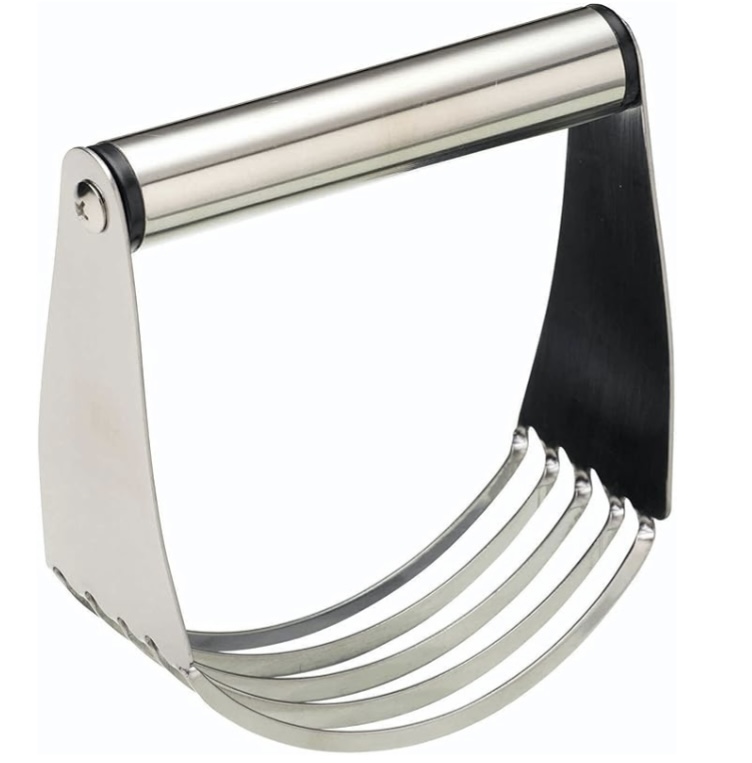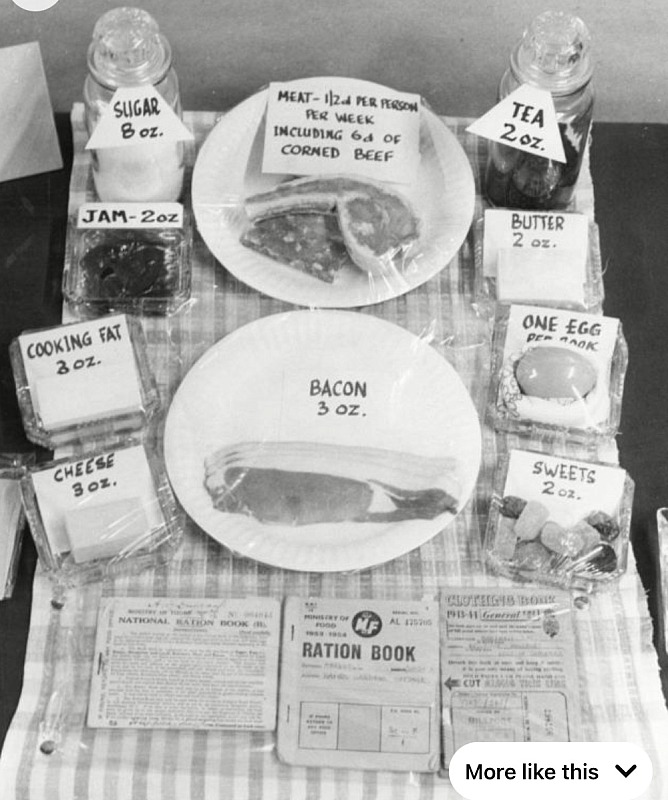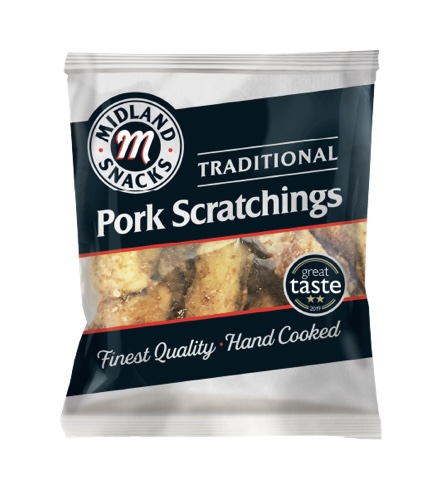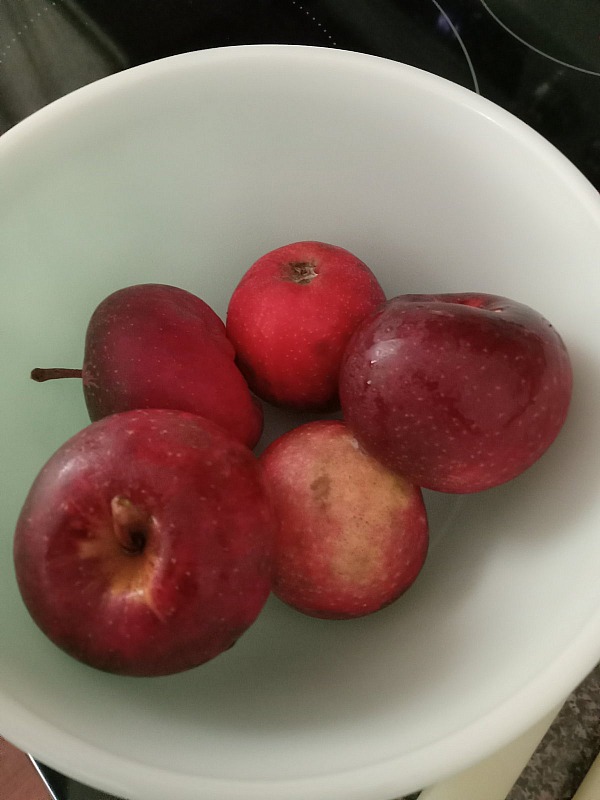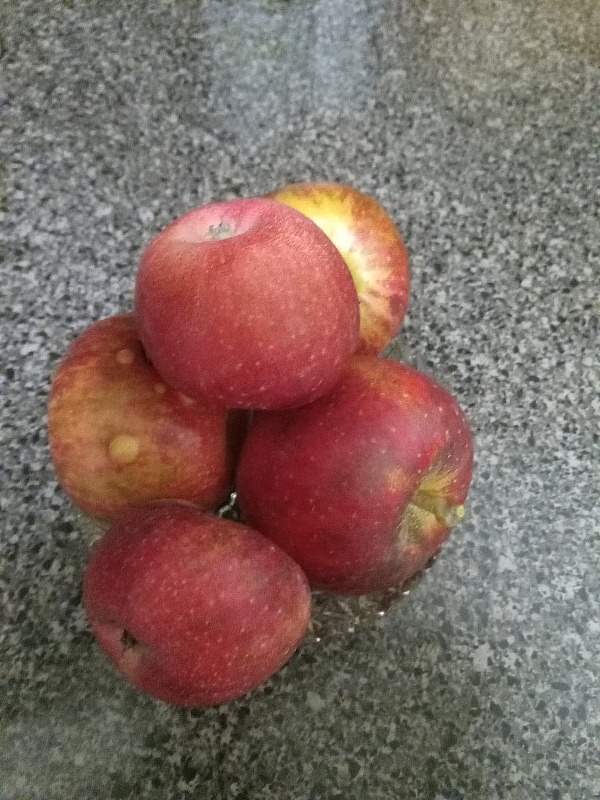Comments On Article: The Butter Pie Crust
If you would like to share your comments for article The Butter Pie Crust, this is where to do it!
Click the Reply To This Topic button below to post yours.
I think we have the same kitchen counter!
I will never forget the first time I made a pie some 60 years ago. I was a teen and my dad had been asking my mom to make an apple pie. Well I was the oldest of 6 kids and she just didn’t have time to make a pie lol. So they went somewhere, idk where, but I decided to make the pie. It turned out great and my dad said it was the best pie he ever had. Turns out I had a knack for making crust and people always say my pie is the best.
I'm curious, is there anything special about pastry cloths? Or would it be possible to use any cotton cloth with a tight weave, such as a tea towel or clean piece of denim?
Grandma Donna Wrote, Terry C, your dad knew how to get a pie :) He was probably very happy to have a daughter that could make him a pie. :)
Tea S, There is a difference with the pastry cloth, it is made from something like a thin canvas so it doesn't fold on you when rolling out the dough.
I have the same question as Tea. I was thinking cotton might not be sturdy enough. But maybe linen would be?
I was reading an article in an old Cook's Illustrated this week. They poo-pooed the use of pastry cloths saying it was more trouble than it was worth and you had to wash them. But I don't suppose it matters to them how much flour or wax paper they use up. And putting it in the freezer makes sense!
I don't do a whole lot of baking anymore but I am getting one of these-either buying it or making one.
Ah, that makes sense, thank you for explaining.
Grandma Donna wrote, Margaret P, I really like using the pastry cloth, it is a cleaner option than using a counter top or using wax paper that gets thrown away. I tried different cloth but it would not work because it would shift when rolling and not absorb the flour like the pastry cloth.
Amazon has them on sale for $7.00 right now, it comes with a cover for the rolling pin. I don't use the cover for the pin. I did order one of these from Amazon to see if they are any good and they are good too, they are just a bit thinner than the ones from Oklahoma Pastry cloth but still work well. I did end up putting a piece of flannel cloth under the one from amazon to keep it from sliding.
As I was saying to Tea S, these are made from some kind of canvas, different than I have seen in a fabric store. The flour will work into the cloth and then it somehow makes things not stick. The instructions recommend just folding it or rolling it and then put it in the freezer.
Here is a description to the one that is on sale right now for $7.00. You will need to copy and paste in the search bar on Amazon.
Regency Wraps Natural Pastry Cloth & Rolling Pin Cover Set, 100% Cotton Cloth & Pin Cover for Non-Stick Dough Rolling, 20x24" cloth with Sewn Edges,15" Rolling Pin Cover
Thank you, that was very interesting. I hadn't heard of pastry cloths before. I always roll out my pastry on a large camphor laurel wooden chopping board. It works a treat. Homemade pastry is the best.
Donna, just a quick question about the Oklahoma Pastry Cloth you have. Did you order the Heavy Weight (11.5 ounce) or the Heaviest - Professional Weight (15 oz per yard)? Do you think there would be much difference in the two and how well they work? Just checking, as I've never tried one before. Thanks for all of the information you provide.
I use half and half butter and lard for short crust pastry. Lard is readily available in British supermarkets at 50p-60p for 250g, a third of the price of butter. It make light pastry and scones.
I use a pastry maker to cut the fats gently into the flour until it looks like breadcrumbs. Too much handling and too much water makes tough pastry which shrinks and cracks when baked.
I roll my pastry out on a large melamine tray, with just a little flour, to make the cleaning up easier. My sister uses a little wholemeal flour for rolling out her pastry.
A pastry cloth is new to me. A thickly-floured cloth used to be used instead of a basin, to boil a suet pudding or the Christmas pudding. The layer of wet flour kept the ingredients in the cloth from getting soggy.
I made a lot of rabbit pies when we were doing out WW2 rationing and Dig for Victory project. We had an allotment to grow fruit and vegetables, a small orchard, and poultry, meat rabbits and bees. The rabbit stew at the pensioners’ lunches got people talking about their Home Front memories. Rabbit was not rationed, was cheap and widely available, and keeping their number down was vital to crop production.
The average fat ration was 4 oz of lard, 4 oz of margarine, and 2 oz of butter each per week, though we use cold pressed British rapeseed oil now to make up our ration instead of modern Ultra Processed margarine.
Thank goodness for the hens in the garden, one egg a week each would have been pretty measly.
Grandma Donna wrote, Gayle H, I forgot there was a choice in weight, it took me awhile to find my order, I couldn't remember when it was. But, I did finally find it and the one I ordered said that it was 11.5 ounce. I hope this helps.
Grandma Donna wrote, Janet W, thank you for your comment and photos. I think the best way to make a pie crust is what world best for each person. Since we are studying the year 1940 I brought up the pastry cloth and when I was growing up they were still being used in my family. I simply forgot about them over the years and I love using them today because there are so many memories attached, plus they are handy to have because I don't have to use as much flour. I wish we could get real lard here. Donna
For Lard, my husband and I bought a case of Brisket from Sam's club last year to stock up for special occasions through out the year. When we pull one out of the freezer, we cut off the fat as much as possible after it's thawed. Then my husband smokes it. But we will take this fat and put it in the crackpot and cook it for a good 8 hours. I have done with with a cast iron pot on a wood stove too. The brisket fat produces a very nice snow white lard. We pour this off into mason jars and freeze them to use for frying foods or pastries. Granted it doesn't supply all our needs but it's nice to have. Anytime you have pork you can freeze the fat trimmed off of it and when you have enough, cook it down slowly and render the fat. If you have a local meat shop they sometimes sell the fat to render or the lard already rendered.
Yes, our butcher will just give us fat if we ask for it; it's usually beef (he keeps the pork fat for his sausages). We've tried the lamb too, but it's stronger tasting and I prefer the beef. We cut it up into small chunks and render it in the slow cooker for a day, and the rendered fat is lovely in pastry. I think it makes an even lighter crust than lard and I prefer it over butter.
We also save all our dripping from cooking meat, bacon and sausage, and skim the fat off the top to cook with. While I don't use this in pastry, it's good for sauteing vegetables, fried rice or scrambled eggs--in fact it tastes good in pretty much everything. I've even used it instead of oil in bread dough.
Does anyone have any suggestions for what to do with the cracklings leftover from rendering fat? The only thing I know of is crackling cornbread, but I'm sure there must be more.
I remember hearing about pastry cloths, but I don't remember my mother using them. I think she just floured her clean countertop.
I stumbled upon a nice silicone pastry mat in a thrift store and use it with a little flour. It won't move or fold, but a cloth, once impregnated with flour, would probably require less flour for rolling out than the silicone pastry mat does. However, I like it and use it for all rolling and cutting, and I can easily wash it. I roll it up with a rubber band and keep it in a drawer. Unlike plastic, it unrolls flat. It's not very 1940's, though!
I love butter in a crust. It's my preferred fat in a pastry crust. I know several people who regard pie crusts as the most difficult thing ever to make, and refuse to try again after one failure, but I've never had a problem with them, possibly because I watched my mother make them and was familiar with the process.
I buy much of my meat from local farms, and they offer lard or the fat to make one's own. I usually use fat trimmed from my meat cuts and make my own, but I have bought the straight fat before and rendered it. Like others here, I usually render it in the crock pot.
Now I'm craving pie.
Does anyone have any suggestions for what to do with the cracklings leftover from rendering fat? The only thing I know of is crackling cornbread, but I'm sure there must be more.
In the Black Country, where the Industrial Revolution started, pork scratchings are treat, often sold in real ale pubs. They are fried until they are browned, and salt added, but I baked mine. They should be crunchy, but can be rather hard
I cook pretty much everything from scratch, I bake all the time, am even asked to do wedding cakes and goodies. HOWEVER...pies are the bane of my existence! I made homemade pie crust and filling, it tastes amazing, but I simply cannot ever seem to get the crust to stop shrinking!! I have no idea what I am doing wrong. I have changed recipes often, rolled it out more, gave more space on the edges, used pie weights.. anyone have any ideas on how to stop the shrinking so much? It happens with basically every crust I make no matter the recipe. They taste amazing but I would like them to be pretty sometimes!! lol.
Michelle L,
You might be either over working the dough, or adding too much water, or not cold enough of water.
You really want it to only barely hold together into a ball, and still be somewhat crumbly when you start rolling it out. It should not be as cohesive as cookie dough for rolling, and of course nowhere near as cohesive as bread or pizza dough. If the gluten in the flour activates, it will become elastic, and shrink when baked.
I know you said you've tried different recipes, but the water is usually given as a range because it really depends on the humidity in your kitchen, so it takes practice to know how much to use each time.
Those are the only causes I know of, but perhaps others will weigh in with additional possibilities.
Good suggestion from Tea S., and also letting the dough rest before rolling it out can relax gluten if it has formed. Giving it an hour in the fridge--or longer--might help. Flatten the ball of dough into a disc first, to make rolling easier after taking out.
oh thanks!! I will try try again!! I live in the mountains of AZ, so humidity is only an issue in july or august usually. No idea if altitude affects it like it does in baking? Maybe i will make two at once and put different amounts of water in to compare? I do put ice in the water before I use it to make it super cold. I am thinking I am trying to make it more cohesive and working it too much... Thanks for the tips!!
People with cold hands make much better pastry. I have the same problem, Michelle, even with a cold mixing bowl, cold fat, and really cold water. Our climate isn’t warm either!
Mum made good pastry, as do my sisters. I try to use just the finger tips, not to rub too hard, to lift my hands enough let the air in. My school cookery teacher took one look and handed me a pastry maker. I do better pastry with the Kenwood.
Warm hands are good for making bread, when you want to activate the gluten in the flour.
Snap Janet, I have naturally warm hands and struggle to keep them cool enough to make decent pastry but as you say it’s a bonus for bread making, ying & yang and all that :-)
Oh I didn't even think of my hands! They used to be freezing all the time but now I just have hot flashes so they are warm now!! lol
Grandma Donna Wrote, all of the answers are good ones, just keep trying to how your area that you live wants you to make it. Relax while you are making the pie dough. Add a touch of extra water a little at a time.
I used to live at a high elevation and keeping it in the fridge longer with more water always helped. It was a high altitude with a dry environment except when it snowed. I've never heard of a pastry cloth or maybe I did and they were called something else. I remember one grandma using one and I thought it was a tea towel. She made incredible pies. I'd like to buy a cloth and try it out especially since it uses less flour which is always good. I have an old fashioned rolling pin that holds ice and water that I guess makes the crust roll perfectly. It washanded down to me, but I've never used it before. I've wanted to research exactly how else to use it before ruining a good crust. We got 10 apples off our trees we planted last year. They were delicious. GDonna we made more queens cakes and the edges burned a smidge as we didn't have any parchment paper, but the were yummy.

Loading more pages
NEW! Join the mailing list to get email notifications when new articles are posted to our site.
Thank you for joining!
IMPORTANT!
You were sent an email to confirm your subscription to our mailing list.
Please click the link in that email to confirm or you won't be added.
If you have not received the email within a few minutes please check your spam folder.

